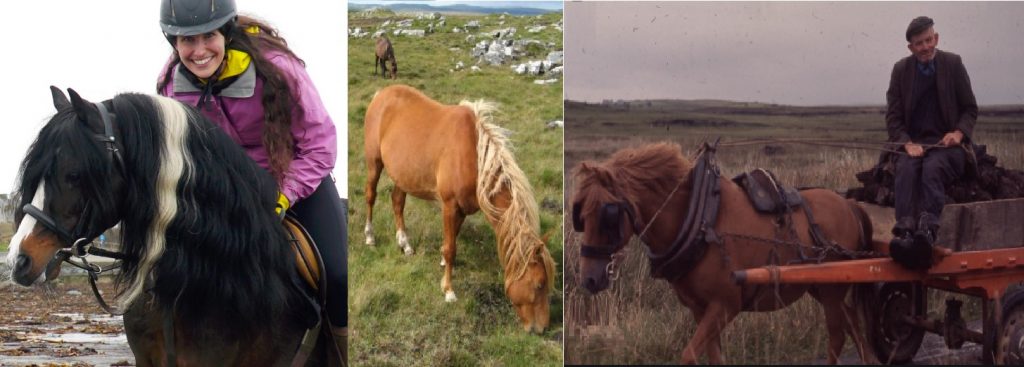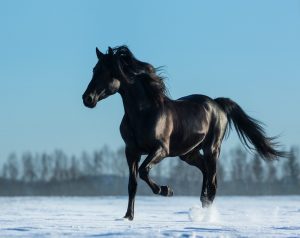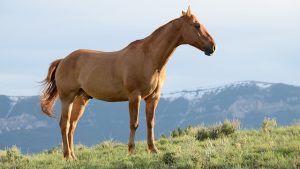Being a trading nation, British breeds have found their way around the planet on all five continents. They have been brought in and taken out of the country since the days of the Vikings. Only a few are mentioned here.
The Shire Horse.
They may be placid, gentle giants, but best to avoid one of them stepping on your toes.
Not surprisingly, the earliest large horses were introduced to the British Isles via the Eastern Coastline, with animals being imported from the European mainland. They spread out to the middle counties or Shires too. Each Shire would have its local governor or Nobleman who would be expected to support the Monarch by raising taxes on civilians and tennant farmers, and also supply military support in times of war. These large horses were superheroes, normally mild mannered animals toiling in the fields, assisting the agricultural industry of the day, but in times of war, they would be a vital part of the militia bringing armaments and “soldiers” to the battle front. They might be use to pull wagons one day, and carry a knight in full armour to lead a charge the next. They had to be strong and once clad in armour themselves, were fairly intimidating to the foot soldiers of the opposing side. We do know that after the arrival of William The Conqueror, many more such animals were imported, and were dispersed throughout the land as Castles and Fortifications were build and populated by Nobles and their personal security forces, who would be expected to come to the Kings aid in times of conflict – together with all the weapons and war horses they could muster. But for most, if not all of their lives, these animals earned their keep in the fields for centuries.
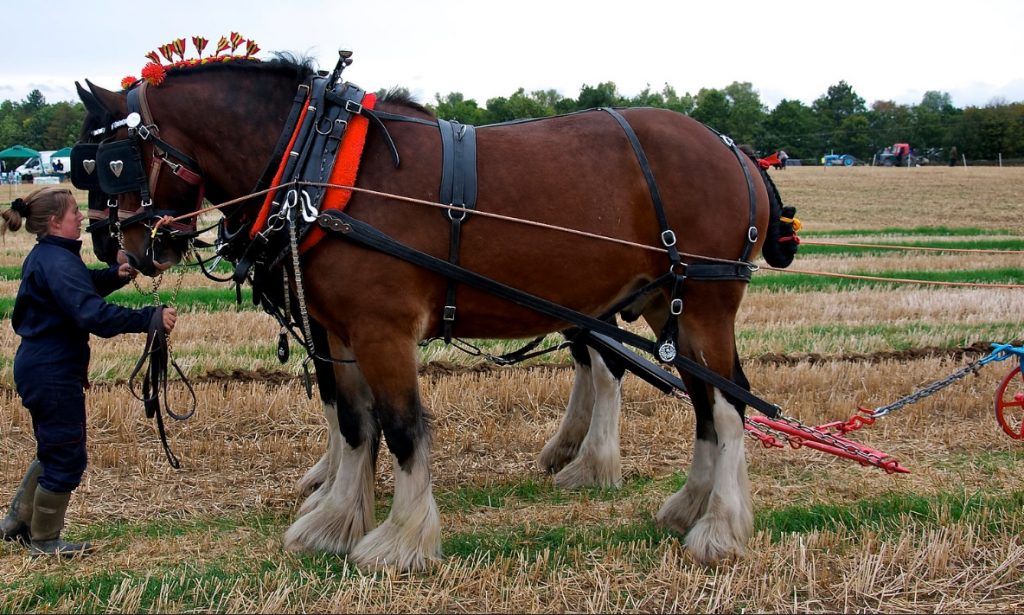
Since such records began, the largest Shire Horse was born 1848, and rose to 21.2hh, with an estimated weight of 1524kgs, so was a bit larger than the typical size of 17hh and 900kgs. Used mainly for pulling ploughs, barges and heavy carts or wagons before mechanisation took hold. Many Shires were exported to the United States, with about 4,000 imported between 1900-1918, though they had been moving to the USA since 1880. At one time there were over 1 million worldwide but they reached a low point in the 1950’s once WW2 petrol rationing ended. Many were slaughtered at that time and at some point, they were declared “endangered” by the Rare Breeds Survival Trust and although their status has since improved, they are still “vulnerable”.
Welsh Mountain Ponies.
The breed has existed in Wales as far back as 1600 BC, and the larger Welsh cob, since the middle ages (somewhere between when the Romans left British shores, and William the Conqueror arriving with his War Horses. Many run wild today, some graze common land or National Parkland 365 days of the year, so they have to be hardy to survive sub-zero winters. Many were used to facilitate coal mining, especially during the industrial revolution. Some would spend 350 days a year is gloomy darkness, suffering the same lung complaints or rock-falls, as their human partners, from those extreme conditions. Others had a happier life in the sun (or rain) as they were used in agriculture (pulling a plough, harrow or cart,) or maybe used in a riding or driving capacity. In 1535, Henry VIII ordered the destruction of all stallions under 15hh, and mares under 13hh, as he wanted to develop war horses. Fortunately, so many Welsh and Moorland ponies were thriving in wild and inaccessible landscapes that they lived on until the law was repealed by Queen Elizabeth in 1566, who realized that the heavier breeds were incapable of surviving on poor land and mountainous regions. The strength and resilience of the cob was recognized by the British War Office during the Great War, that they paid a premium for them. They were the Executive Transport of the early 20th Century used by Doctors, Clergymen and Tradesmen. One test of soundness was to trot them from Cardiff to Dowlais (a 35mile uphill incline), non-stop in under 3 hours. They have been crossed with many other breeds in the development of horses around the world. Many have been exported to the USA since 1880.
They range from Section A (11hh) to Section D (15hh) and will co-exist with farm stock like sheep and cattle without the aggressive biting habits shown by the smaller Dartmoor ponies.
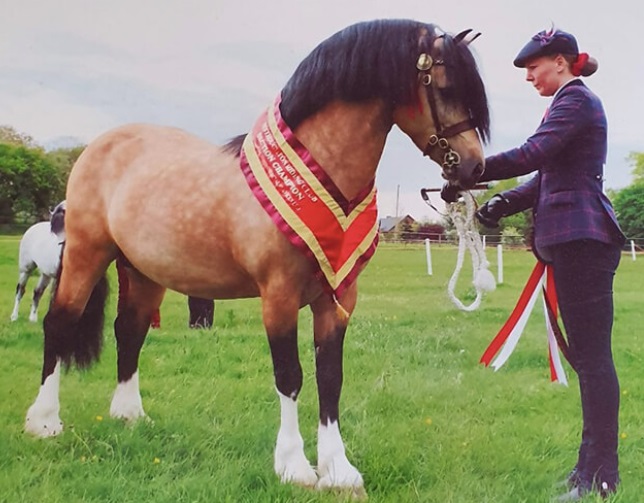
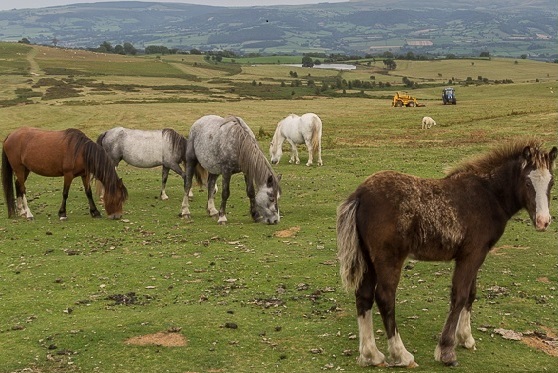
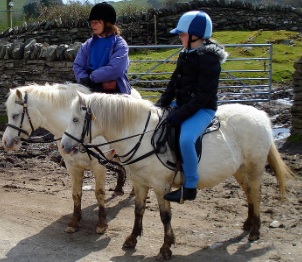
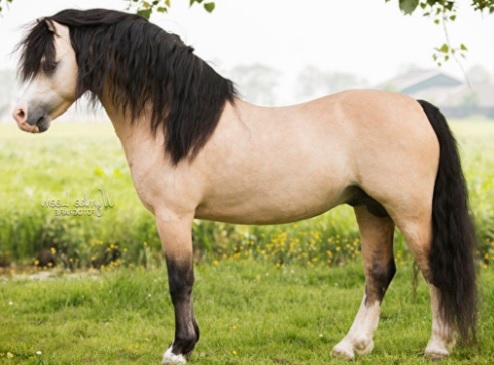
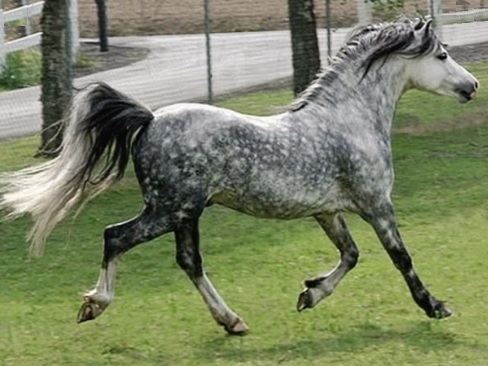
Clydesdale
Originally the Clydesdale was a small draught horse. Some stallions were believed to have been imported from Belgium and paired with local mares in the Clydesdaye/Lanarkshire area. One was owned by the 6th Duke of Hamilton (1724-1758), whose tenants were allowed free use, in an effort to upgrade local agricultural work horses, the other owned by John Paterson of Lochlyloch, and circulated under a co-operative scheme for the same purpose. Many were seconded to the Great War (WW1), and bloodlines were lost. After that mechanization started to take hold and by the end of WW2 their numbers were at critical. However many had been exported to the USA , Canada, Australia and New Zealand, as well as South America, Europe and Russia.
Having been the smallest Shire horse in the United Kingdom (14-15hh), by 1940, it has been bred into a taller animal (16-18hh). These days they perform ceremonial roles with the Household Cavalry, some are employed in agriculture, as show horses and some to haul promotional Brewery Wagons in parades. In the USA Budweiser maintains a strain of Bay horses with white markings, but the most sought after is Black with four white feathered feet. Other colourings are common as are piebald & skewbald. They take to saddle as well as harness in both military and civilian contexts.
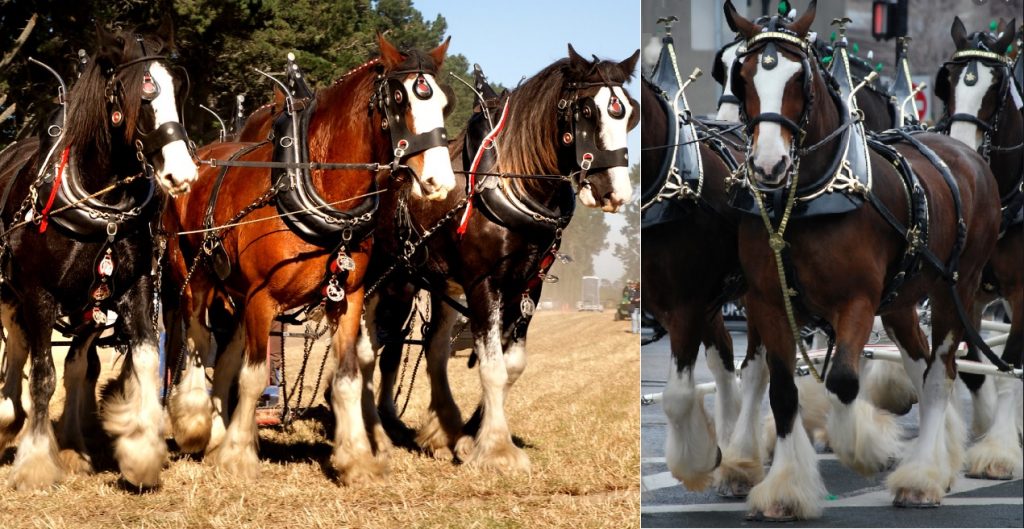
Irish Bog Pony
Also known as the Kerry Bog Pony, it is versatile inasmuch as it is hardy enough to thrive on mountains, wetlands and exposed coastal pastures. This sturdy breed has been used to pull a cart or as a pack horse to transport peat, kelp, goods and people around the roads and lanes of Ireland, as well as being light enough to not break through the turf covering an area of peat bog. They are more closely related to breeds in Iceland, Shetland, Dartmoor and Exmoor than the geographically closer breeds from Connemara, Irish Draught, or Welsh Mountain ponies. They stand at 11-12hh, and are proportionately strong boned and muscular with a good dense winter coat. These days they are popular with children for pleasure and therapeutic reasons, can be ridden or driven, as well as being utilized as companions to larger and more specialized breeds.
Believed to be extinct by many, John Mulvihill of the Red Fox Inn (County Kerry) made it his quest to seek out remnants of the breed, common in his childhood. He secured 20, including a stallion he called Flash Fox, who between 1995 & 2012 sired 140 foals. Some were exported to the USA soon after the Irish Government recognized the breed as the Irish Heritage Pony. They are now dispersed and tracked in various countries by the Kerry Bog Pony Society (Ireland, Great Britain, American and International branches).
